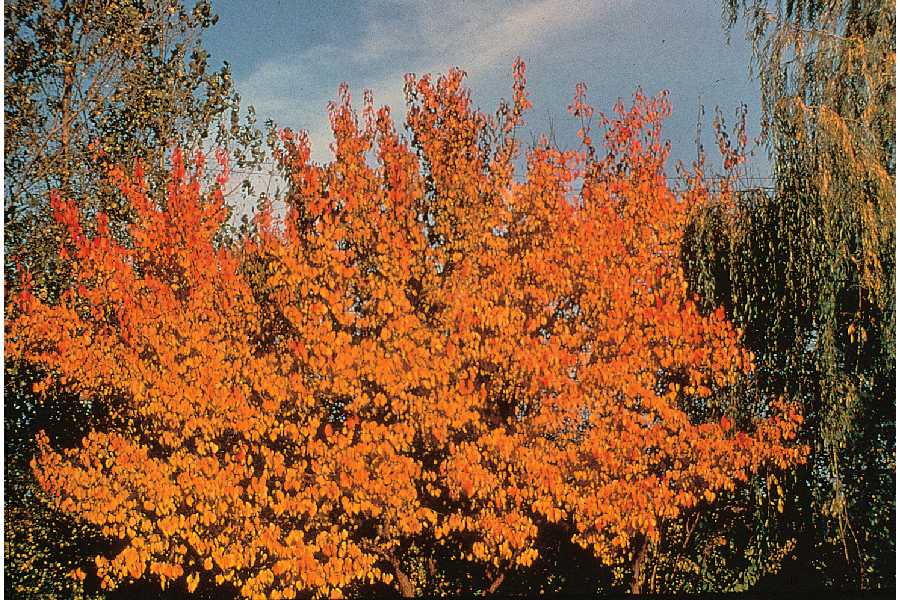Prunus
|
Family: Rosaceae |
Tree or shrub Leaves: alternate, usually toothed. The stalk has small, early-falling stipules near the base and usually has a conspicuous pair of glands near the top. Flowers: bisexual, can be solitary but usually in clusters, white to pink or red, with numerous stamens (about twenty) and a usually single pistil with an elongated style, superior ovary, and two ovules (one is aborted). Sepals: five, fused at the base, with spreading to reflexed lobes, usually falling after flowering. Petals: five, elliptic to inversely egg-shaped and spreading. Fruit: fleshy with a hard center stone (drupe), often more or less spherical but varied, usually covered with a waxy whitish coating (glaucous). The stone is usually compressed and bears a single seed. Bark: smooth or breaking into small plates, often with many horizontal corky spots (lenticels). Buds: with many overlapping scales. Flowering: spring, usually before the leaves emerge Habitat and ecology: Thickets and woodlands. Some Prunus species are native, while others are introduced and sometimes escape into natural areas. Notes: The genus Prunus includes many important crops such as cherries, plums, peaches, apricots, and almonds. Etymology: Prunus is the Latin name for plum. Author: The Morton Arboretum Hypanthium cup-shaped, obconic, or urceolate; sep spreading or reflexed, usually soon deciduous; pet 5, white to pink or red, elliptic to obovate, spreading; stamens ca 20; pistil 1, simple, 2-ovulate, inserted at the bottom of the hypanthium and bearing a terminal style; fr a 1-seeded drupe, the exocarp fleshy or juicy, the endocarp (stone) hard; trees or shrubs with simple, serrate lvs, very often with a pair of large glands at the summit of the petiole, the fls conspicuous, umbellate or solitary from axillary buds or short lateral branches, or racemose and terminal; bark commonly with conspicuous horizontal lenticels, relatively smooth, or breaking up into smooth platelets. (Amygdalus, Cerasus, Padus) 200, mainly N. Temp. Gleason, Henry A. & Cronquist, Arthur J. 1991. Manual of vascular plants of northeastern United States and adjacent Canada. lxxv + 910 pp. ©The New York Botanical Garden. All rights reserved. Used by permission. |

